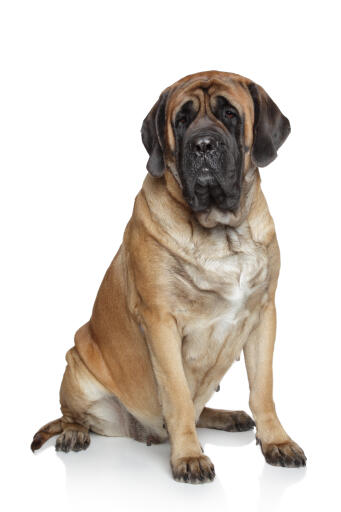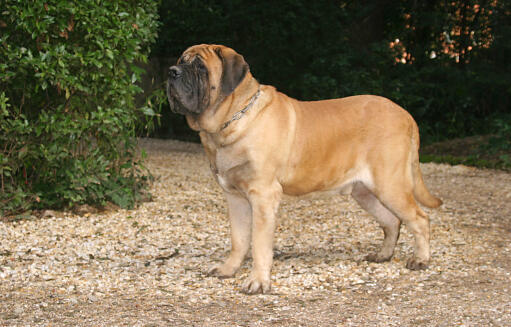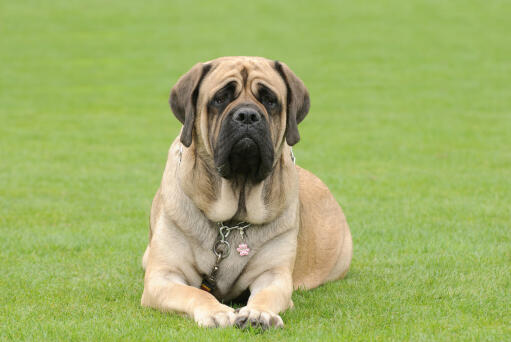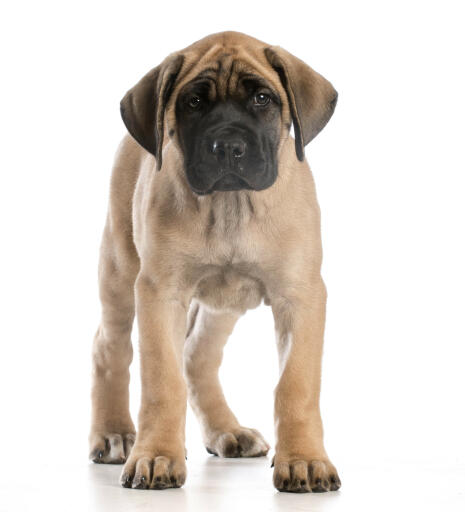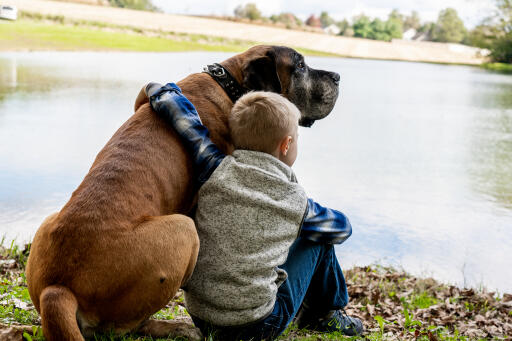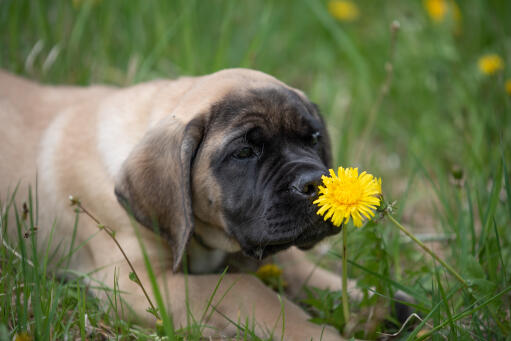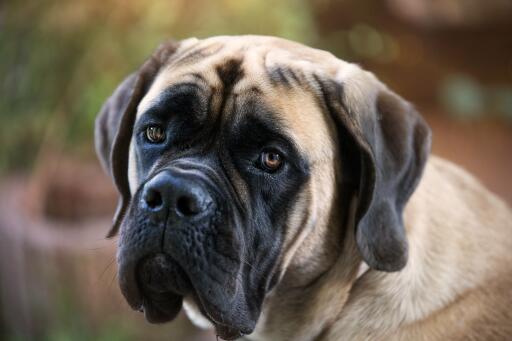Mastiff hund







History
The modern day Mastiff originates from England and dates back centuries. It is sometimes called the Old English Mastiff. They were descendants of the old Molosser dogs dating back thousands of years, probably from Asia. The 'modern day' Mastiff was bred as a guard dog, for bull/bear baiting, war dog and lion fighter and exported all over the world when armies would march to new countries. With the outlawing of bull baiting and dog pits in the 1800's, the breed popularity soon declined and during World War II, when it became impossible to feed such a huge dog, due to food shortages, the numbers fell rapidly. However, true to it's fighting spirit, they are now very popular once again.
Behaviour
The Mastiff is a gentle giant. They ooze grandeur, are docile and friendly with their family. They love a cuddle and will try and sit on your lap given half a chance. For such a large dog, with fierce reputation, they are loving and affectionate with their family. They get along well with other dogs at home, are good with children, but can sometimes knock them over due to their size, no malice is meant.
They are generally aloof with strangers and will quietly sit and watch. If they feel you are under threat, they will step in but are rarely vicious and tend to be vocal if they feel you need protecting. An intruder in the house will be greeted by a powerful dog who will keep them cornered until you arrive. Any arguments within the family will upset them and they will often step in and bark to stop the row. They are sensitive giants who will become shy and withdrawn if poorly handled.
They need puppy training classes to start the foundation of a well balanced dog. A huge untrained dog will pull you over, so lead work should be the first priority. They need firm, but loving handling to get the best out of them, using positive reinforcement and food rewards and never harsh treatment as they will react badly. They need patient leadership and will respond well to it.
They need a fair amount of exercise, but this should be closely monitored when they are young. Given too much exercise at a young age will result in leg problems for the developing bones and tendons etc. By the time they are 18 months old, they should be fully grown and exercise can be increased. Up until then, allow them to play and rest as they need to. They can tire and overheat easily. so it's good to know when your Mastiff is tired and allow them a chance to rest. They will want to please and will walk along side you for hours, just to be close, but you should be able to recognise when they need a break.
They are the perfect height to steal food from kitchen worktops, so food should be put away to stop them 'snacking'! Mastiffs like to chew so provide plenty of chew toys to prevent them eating your shoes and chair legs. They snore, grunt and drool - everywhere. They can be lazy and food should be watched to prevent obesity.
Their coat requires regular brushing to remove dead hair, but otherwise, they have an easy care coat. The facial wrinkles will need washing with a cloth every so often.
Health Problems
Large deep chested dogs are more prone to Gastric Torsion, also known as Bloat. so this should be watched out for. Hip dysplasia and Progressive Retinal Atrophy is also more common in Mastiffs.
Breed Details
- Status: Common
- Vægt: 79 - 86kg
- Højde: Male min: 30" Female min: 27.5"
- Farve: Fawn, apricot or brindle
- Rare: Nej
- Coat: Lavt - Double
- Grooming Requirements: Everyday
- Town or Country: Land
- Minimum Home Size: Large House
- Minimum Garden Size: Small to Medium Garden
- Breed Type: Working Dog
- Størrelse: Stor
- Energy Level: Lav
- Exercise Required: Up to 1 hour

